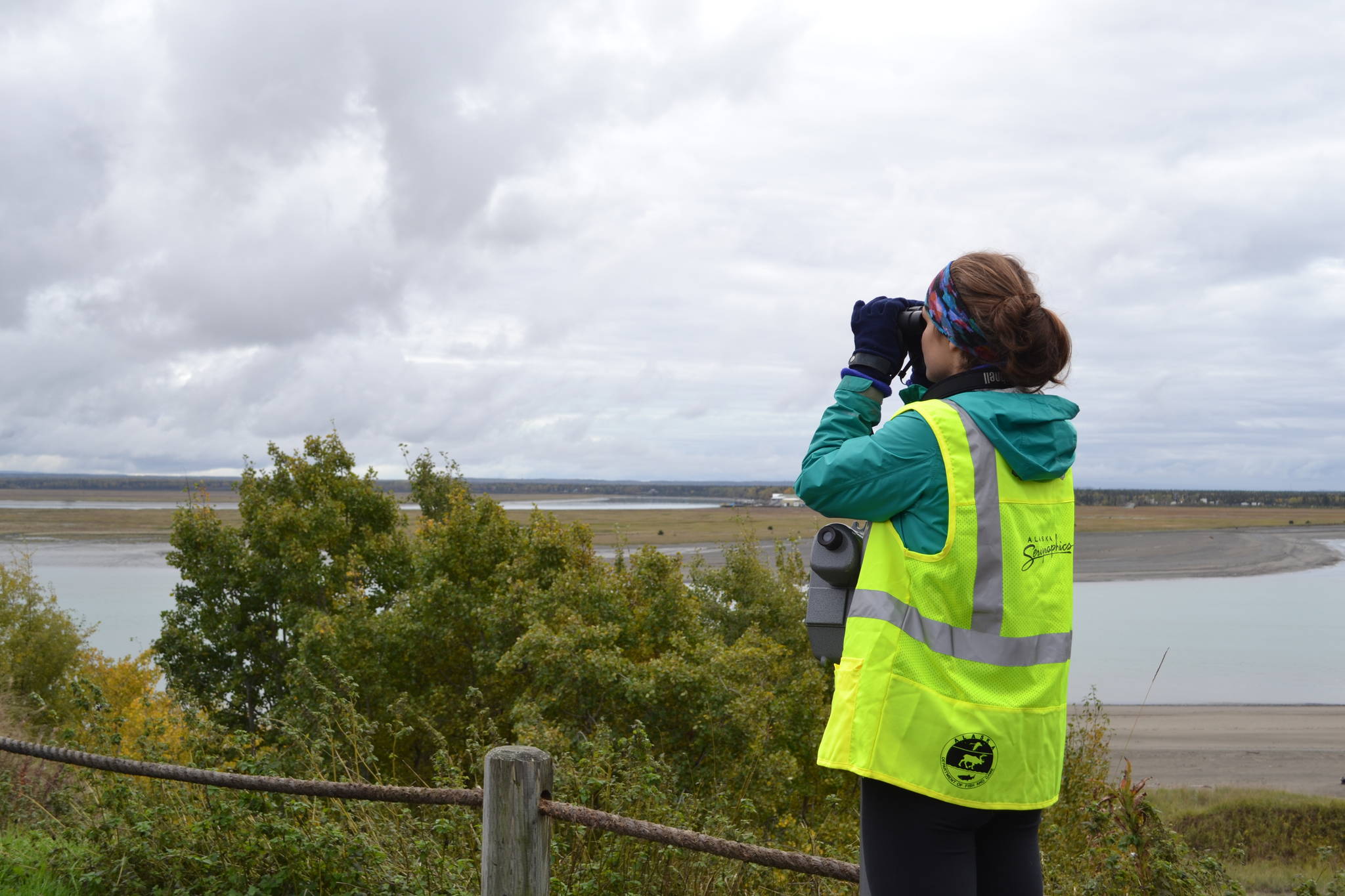Citizen scientists from around the state scanned the waters of the Cook Inlet last weekend for the third annual Belugas Count! event.
On Saturday from 10 a.m. to 2 p.m., 15 public viewing stations were set up around Cook Inlet, from Tyonek to Goose Bay to Homer, where people could come and assist the National Oceanic and Atmospheric Administration (NOAA) in their annual tally of the endangered Cook Inlet beluga whale.
One station was set up in Kenai at Erik Hansen Scout Park, which overlooks the mouth of the Kenai River as it flows into Cook Inlet. Volunteers Grace Kautek and Ed Schmitt staffed the Kenai station and provided beluga-watchers with information about the animals as well as extra binoculars, hot coffee and snacks.
Schmitt is the president of the board for the Alaska Wildlife Alliance, of which Kautek is also a member. Both were involved in the Kenai count last year, and Kautek took a break from her day job at the Alaska Zoo in Anchorage to visit family and help with the count.
By noon on Saturday, beluga-watchers had already spotted 14 belugas that had made their way up the Kenai River. Locals have reported beluga sightings on the Kenai River for decades, and sightings are highest in the spring and fall for one reason: fish.
“They use the river as a funnel,” Kautek said. “They’re coming when the tide is lower and there’s less water in the river so the fish are channeled … when that happens, they pretty much just open their mouth and wait for the fish to come in.”
Since the belugas had already made their way up the Kenai River to feed by noon, Schmitt said that they were recommending that people go out to the Kenai City Dock or the wildlife viewing platform on Kalifornsky Beach Road to get a better look. The vantage point at Erik Hansen Scout Park offered a great view of the mouth of the river, but the trees and the bluffs limited the sight lines further up the river.
“We’re hoping as they come back out they’ll line up and we’ll be able to get a better count,” Schmitt said. “They went in probably just before we were setting up and split into two groups: one went up by the cannery and one stayed by the city dock.”
Schmitt said that about 25 people had visited the viewing station by noon. Some people brought chairs for extending viewing while others just stopped by briefly to see how things were going.
Kautek said that the beluga count is important to keep track of the population that exists in the Cook Inlet — a population that is genetically distinct from other belugas found around Alaska and has been considered endangered since 2008. In the 1990s, over-hunting brought the Cook Inlet beluga count from 1,300 to just 300 in 1999. Since then, there has been a moratorium on beluga hunting, but the population continues to hover between 300 and 400.
“It’s alarming because once you stop killing something, the population tends to rebound,” Schmitt said. “And that doesn’t seem to be happening with these whales.”
At about 1:30 p.m., Schmitt received a call from volunteers farther up the river that reported the belugas were headed back toward the inlet. Everyone on the scene grabbed their binoculars and waited patiently, hoping for a glimpse of a beluga back or a spout of water shooting up from the river — but to no avail.
Kautek guessed that the belugas had essentially gone into “travel mode,” meaning they surface only briefly and move quickly, making them harder to spot than when they’re feeding or idling. Either way, 14 was the final count for the Kenai station, while 58 belugas were counted across all the stations that day.

